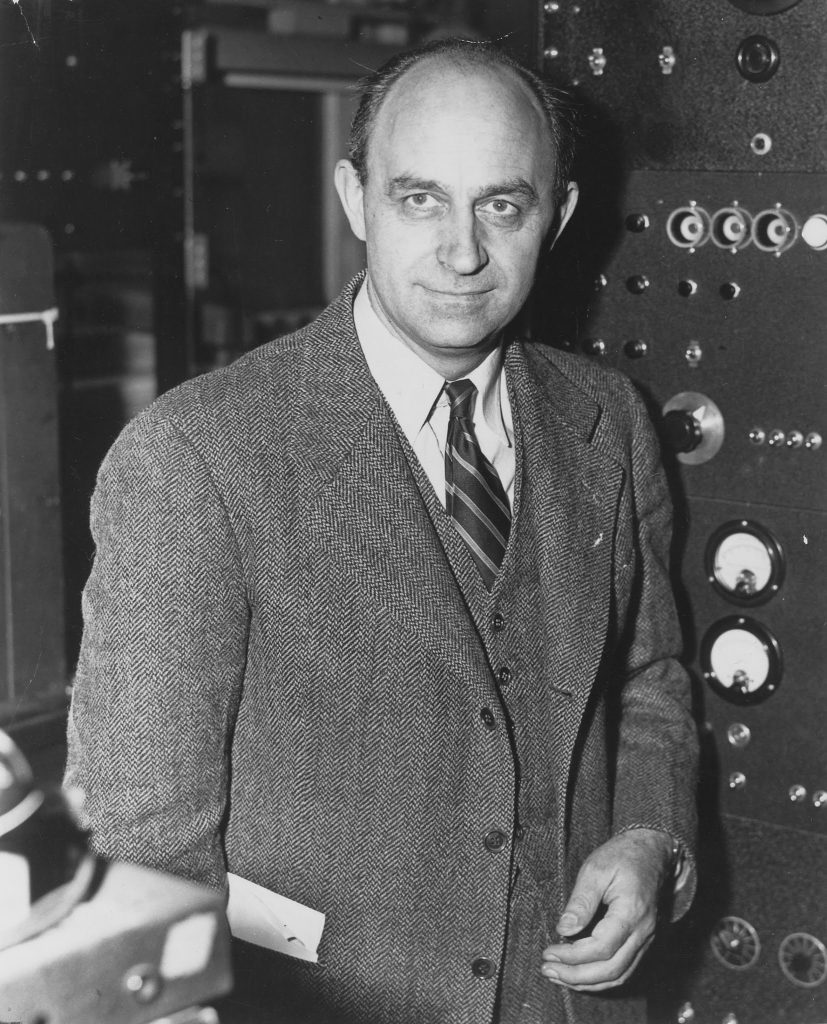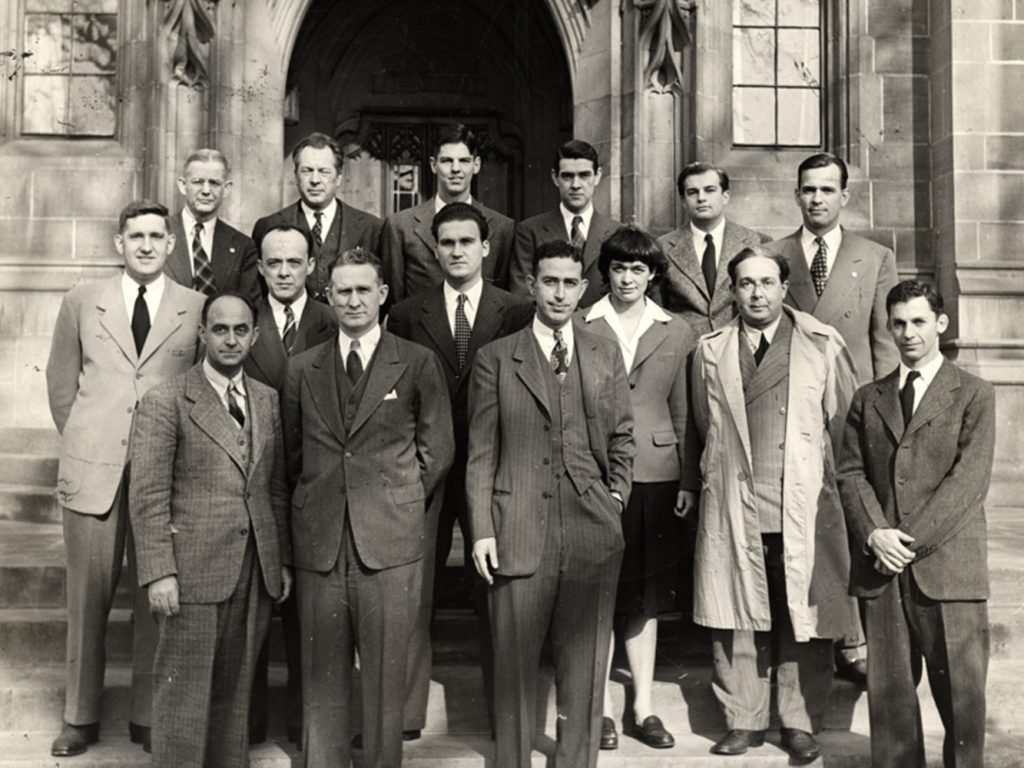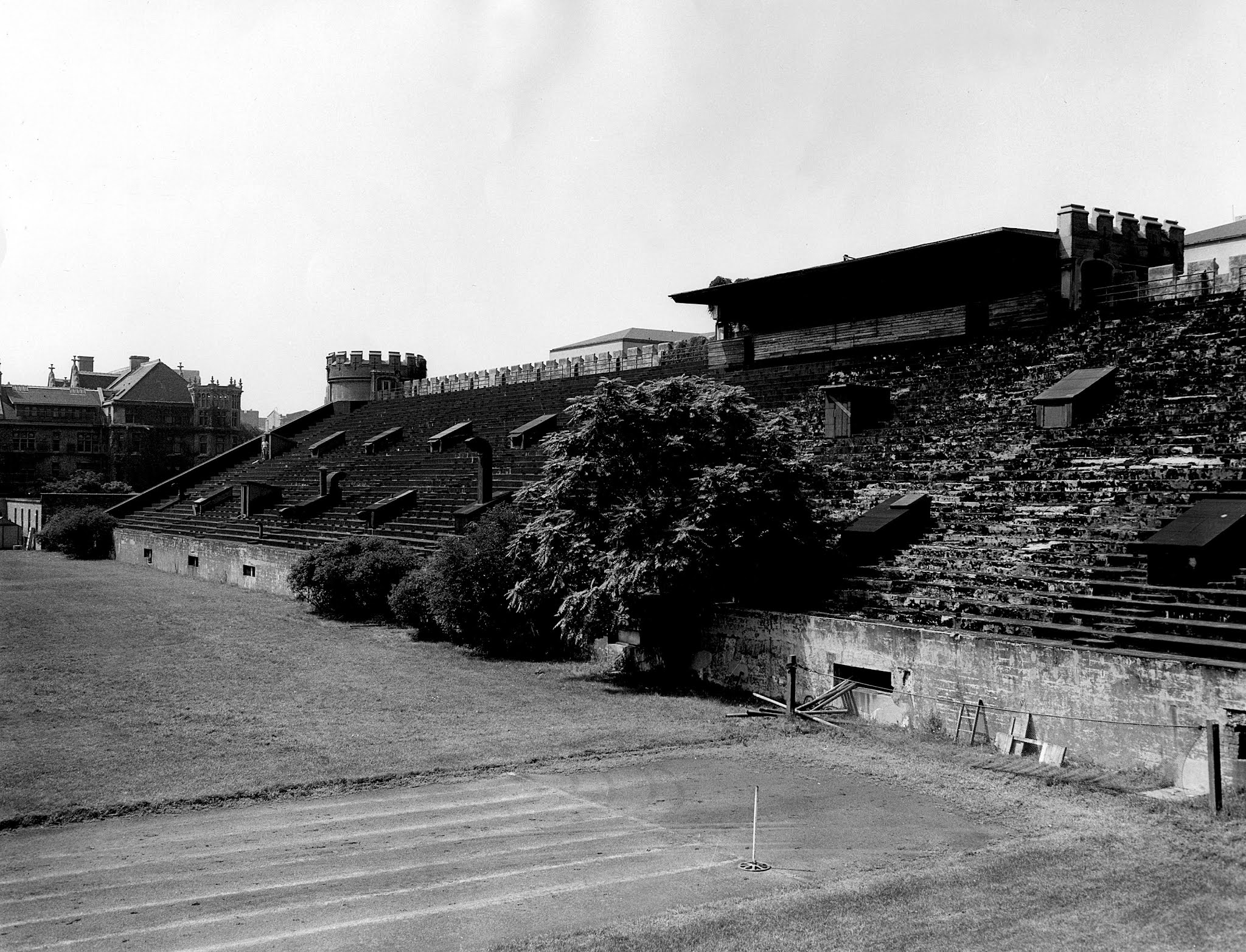With the release of Oppenheimer this weekend, it’s also important to remember Illinois’ place as a leader in science. The atom was first split at the University of Chicago in 1942. Read more below:
Announcing the successful deployment of the world’s first atomic bomb in August 1945, President Harry S Truman said that America had won “the race of discovery against the Germans.”
It was apt to have used a sports metaphor to announce the completion of a project which had accomplished one of its most important steps underneath the bleachers of an Illinois football stadium in 1942.

One of the leading scientific minds in the world, Enrico Fermi, had come to the United States from his native Italy in 1938. He had been alarmed by the rise of the country’s fascist government and upon receiving the Nobel Prize for physics at a ceremony in Sweden, Fermi and his family had set sail from Stockholm for America.
Fermi had already been conducting research into nuclear chain reactions. Before leaving Italy he had studied the structure of atoms and had achieved breakthroughs in nuclear physics. It was his team’s study of neutron physics which had earned him the 1938 Nobel Prize.
Arriving in the United States, Fermi found that his scientific fame had preceded him, and he was hired as a physics professor at Columbia University. In 1939 he presented a lecture at the Department of the Navy on the potential of nuclear energy for military use. The peacetime Navy, pre-occupied with other concerns, made only a small investment in Fermi’s research at Columbia. But more help was on the way.
President Franklin Roosevelt had been approached by a group of scientists including another European expatriate, Albert Einstein, with the concept of building the most destructive bomb the world had ever known – a project the scientists warned the German government was already pursuing. Splitting an atom could release enormous amounts of energy with the potential for mass destruction. Fearful of such technology falling into the hands of the Nazis, Roosevelt authorized a top secret effort, code named the Manhattan Project, to develop an American bomb first. Fermi was quickly recruited to the cause.
Following the attack on Pearl Harbor, the atomic research took on a new urgency. The University of Chicago’s Dean of Physical Sciences, Professor Arthur Compton, himself a Nobel laureate and a member of the advisory committee established by Roosevelt’s initial order, sought to consolidate the research efforts which were then underway at labs throughout the country. Fermi joined the team at what was now called the Metallurgical Laboratory in February 1942.
Of course, the term “Metallurgical Laboratory” was a cover for the top secret atomic research that was really going on. While the University would administer the program and provide it with support, the school still had an academic mission to accomplish for its students. Space had to be found on campus for the project, some of which could be done in existing laboratories and structures, but much of the top secret research could not be conducted in just any academic building with uncontrolled access.
A solution soon became apparent. After enjoying phenomenal success on the gridiron under head coach Amos Alonzo Stagg, the University of Chicago had dropped its football program in 1933. But it still had the stadium and its supporting buildings. While chemists did their work in the school’s existing chemical labs and medical researchers worked in the hospital and medical labs, the physicists set up shop beneath the vacant stands of the football stadium, displacing a squash court and eventually some tennis courts as well.
The key first step in harnessing atomic power for military purposes was determining if it was even possible to deliberately set off; and most importantly, control; a nuclear reaction. This was the task Fermi’s team at UC was assigned.
Hundreds of workers were hired for the project, including a physicist and doctoral student at UC named Leona Marshall Libby. Libby, an expert in the spectrometry needed to precisely calibrate instruments for the experiments, would be among the 49 scientists present for the world’s first controlled nuclear reaction.
Experiments had proceeded through the summer and fall of 1942, but plans for the construction of the reactor (then known as a “pile” because it consisted of a pile of graphite and uranium blocks which reached as high as 20 feet) for the actual reaction were falling behind. The plan had called for building the reactor, Chicago Pile-1, far to the west of Chicago, but with wartime materials shortages and other problems, the delay was threatening to throw off the entire project’s schedule. Compton and Fermi decided to go forward with the reaction right where the rest of the experiments had taken place: under the stands.


Landscap
of the first controlled nuclear fission chain reaction.
Credit: University of Chicago Photographic Archive,
Hanna Holborn Gray Special Collections Research Center,
University of Chicago Library (left) – Stagg Field Reactor (right)
Concerned about security, but confident that the risky experiment would succeed and that the reaction could be controlled, Compton later said he did not notify UC President Robert Hutchins or Chicago Mayor Edward Kelly of what was happening. Using the data from the series of smaller experiments, the Metallurgical Laboratory had painstakingly aligned the graphite and uranium blocks in the right alignment to force neutrons from one uranium atom to strike another atom, splitting it and causing its neutrons to in turn strike other uranium atoms in a chain reaction. Once started, control rods made of cadmium would be used to slow and eventually stop the reaction.
Or so everyone hoped.
Project messenger Ted Petry recalled the construction team using jackhammers to cut doorways into the stadium’s west stands. “If the pile went critical and they couldn’t control it, they said ‘get through those things and head for Indiana!’”
The big moment came at 3:25 p.m. on December 2, 1942. Fermi gave the go-ahead to start removing the cadmium control rods and Libby’s instruments started monitoring the number of neutrons being ejected from the uranium atoms. Everything proceeded smoothly and exactly as expected.
“That’s it,” Fermi said at 3:53 p.m., anticlimactically concluding the experiment.
After 28 minutes the control rods were reinserted and the reaction concluded. The Chicago team had achieved the world’s first controlled nuclear chain reaction.
The team celebrated with paper cups of Bertolli Chianti. Afterward they all signed the bottle’s wrapper. Fermi sent a coded telegram to Washington announcing the project’s success: “The Italian navigator has landed in the New World.”
The experiment concluded, the pile was disassembled. Its parts would eventually be moved to a site near Palos Hills which became the Argonne National Laboratory. More than 80 years later, Argonne, now located near Lemont, continues its research into the peaceful use of nuclear technology.
Having proven that a controlled nuclear reaction was possible, the Manhattan Project now moved on to harnessing the technology for military purposes. To create enough nuclear material for bombs, the project needed bigger reactors. These would be built in places whose names would go down in history as key sites in the development of the bombs which ended the war: Hanford, Washington, Oak Ridge, Tennessee, and Los Alamos, New Mexico. But the work done at those once-secret facilities was made possible by the discoveries made beneath the stands at an abandoned football stadium in Illinois.
The stadium was demolished years later, and today the site is the home of UC’s library. Outside stands a domed, bronze sculpture called “Nuclear Energy” which commemorates the discovery.
“Like anything that is powerful, it has a power for good and evil,” said sculptor Henry Moore of the monument.
Many of the scientists involved in the project went on to distinguished careers in the peaceful pursuit of scientific knowledge. Fermi was named a Distinguished Professor of Physics at UC in 1945, the same year he was elected to the National Academy of Sciences. He split his time between UC and Argonne where he continued his research. UC established the Enrico Fermi Institute to continue its scientific exploration across many fields.
Fermi died in 1954. He is buried in Chicago’s Oak Woods Cemetery. In 1974 a particle accelerator and physics laboratory in Batavia, Illinois, jointly run in part by UC, was re-named the Fermi National Accelerator Laboratory, or Fermilab.
Ted Petry, the last surviving eyewitness to the experiment, was present for the 75th anniversary commemoration at UC in 2017. He died at his home in Oak Park in 2018.
